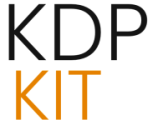## Tips for Conducting Effective Keyword Research for Amazon KDP
Title
Text
Subtitle
Text
Sub-subtitle
Sub-Sub-subtitle
Text
- List item
- List item
- List item
- List item
Text
Bold
Italic
Quote
## Introduction Amazon KDP is a self-publishing platform that allows authors to publish and sell their books directly to Amazon customers. In order to be successful on Amazon KDP, it is essential to conduct effective keyword research. This means identifying the keywords that potential readers are using to search for books like yours. By targeting the right keywords, you can increase your book’s visibility in Amazon search results, which will lead to more sales. ## Keyword Research Basics The first step in keyword research is to understand what keywords potential readers are using to search for books like yours. You can do this by using a keyword research tool such as Keyword Planner or SEMrush. These tools will give you a list of keywords that are relevant to your book, along with their search volume and competition level. Once you have a list of keywords, you need to assess their potential value. This means considering factors such as search volume, competition level, and buyer intent. Search volume refers to the number of times a keyword is searched for each month. Competition level refers to the number of other books that are targeting the same keywords. Buyer intent refers to the purpose of the search. For example, a search for “how to write a book” is likely to be made by someone who is interested in learning how to write a book, while a search for “best books about writing” is likely to be made by someone who is looking for a book to read. ## Conducting Keyword Research for Amazon KDP There are a few different ways to conduct keyword research for Amazon KDP. You can use a keyword research tool, analyze your competitors’ books, or read reviews of books in your genre. Keyword research tools can be a helpful way to identify relevant keywords that are worth targeting. However, it is important to remember that these tools are not perfect. They can only give you a general idea of the keywords that people are using to search for books. You will still need to do your own research to make sure that the keywords you are targeting are relevant to your book and that there is enough demand for them. Another way to conduct keyword research is to analyze your competitors’ books. This can give you a good idea of the keywords that are being used by other authors in your genre. To do this, you can simply visit the Amazon page for your competitors’ books and look at the keywords that are included in their titles, descriptions, and reviews. Finally, you can also read reviews of books in your genre to get ideas for keywords. When people write reviews of books, they often include keywords that they used to find the book. By reading reviews, you can get a good idea of the keywords that are relevant to your book and that potential readers are using to find books like yours. ## Using Keywords in Your Book Title and Description Once you have identified a list of relevant keywords, you need to use them in your book title and description. Your book title is one of the most important factors in determining your book’s visibility in Amazon search results. Make sure to include at least one of your target keywords in your book title. You can also include additional keywords in your book description. When writing your book description, focus on using keywords in a natural way. Don’t stuff your description with keywords, as this will make it look spammy and will actually hurt your book’s ranking. Instead, use keywords in a way that is relevant to your book and that will help potential readers find your book. ## Promoting Your Book with Targeted Keywords In addition to using keywords in your book title and description, you can also promote your book with targeted keywords. This means using keywords in your marketing materials, such as your website, social media posts, and email campaigns. When you use keywords in your marketing materials, you are essentially telling potential readers that your book is relevant to their interests. This can help you attract Read More...Forsaken Commander Triumphs as Amazon’s Kindle Storyteller Award WinnerAmazon’s Kindle Storyteller Award Crowns Forsaken Commander as 2023’s Winning Title Amazon’s Kindle Storyteller Award Crowns Forsaken Commander by G.J... Read MoreHow to Master China Digital Publishing Expo Zhengzho…I understand you're looking for a detailed, SEO-optimized blog post. However, to create this, I need the original content from... Read MoreKDP Royalty Change: What Authors Need to KnowKDP Print Royalty Cut: How Authors Can Adapt Hey there, fellow authors! It's been a bit of a stir in... Read MoreDominate Amazon Sales: 2024 Advertising Guide & StrategiesAmazon Advertising Guide: Maximize Your Potential in Amazon.com. The undisputed heavyweight champ of online shopping. In this day and age... Read MoreHow to Market Your E-Book Beyond the Amazon EcosystemIn the past few years, the e-book market has exploded. In 2022, e-book sales accounted for 67% of all book... Read MoreHow to Master hybrid publishing models gaining tract…Operational Excellence: The Necessity of Personal Management in Scale The self-publishing ecosystem is vibrant, but it’s also noisy. The continued... Read More2024: Plan Your Goals, Invest Your Efforts and Thrive2024: Your Year of More: Plan Your Goals and Invest Your Efforts Noah William Smith In his groundbreaking digital book,... Read MorePersonalization in Digital Publishing: How AI and ML Enhance User ExperiencesEnhancing User Experiences through Artificial Intelligence and Machine Learning in Digital Publishing In the ever-evolving digital landscape, personalization has emerged... Read MoreImpact of synthetic content on genuine authorship va…The Unseen Crisis: Why Synthetic Content, Not Censorship, Poses the Bigger Threat to Books The contemporary discourse surrounding literature is... Read More |









